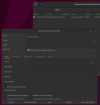Alternativeto.net is a handy resource.
I'm wondering what you guys use instead of the new(er) Microsoft Remote Desktop, to access Windows domain computers from a Linux box?
Limitation is doing so without deploying yet another client just for my personal convenience. We did have VNC, but as that's being phased out it's not quite so obvious. Our fleet of Windows desktop & servers run Msoft Edge, most have Google Chrome, all are managed by Microsoft Configuration Manager.
Obviously I'll spin up SOE compliant VMs and can just jump through there, but how might a linux box remote control Windows computers directly?
Edit: X2go, maybe...
I'm wondering what you guys use instead of the new(er) Microsoft Remote Desktop, to access Windows domain computers from a Linux box?
Limitation is doing so without deploying yet another client just for my personal convenience. We did have VNC, but as that's being phased out it's not quite so obvious. Our fleet of Windows desktop & servers run Msoft Edge, most have Google Chrome, all are managed by Microsoft Configuration Manager.
Obviously I'll spin up SOE compliant VMs and can just jump through there, but how might a linux box remote control Windows computers directly?
Edit: X2go, maybe...
Last edited:


